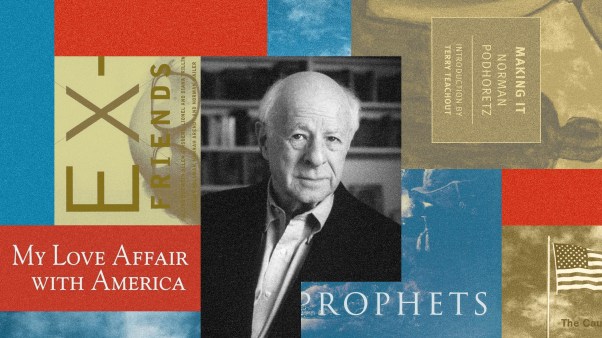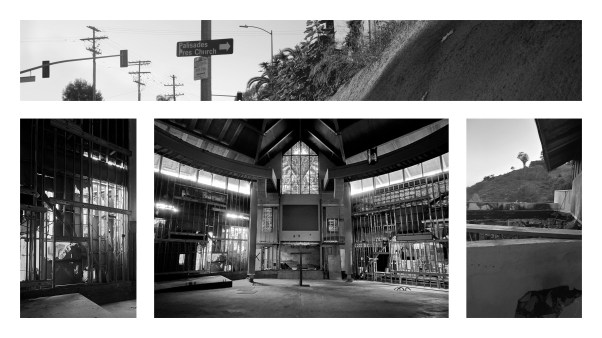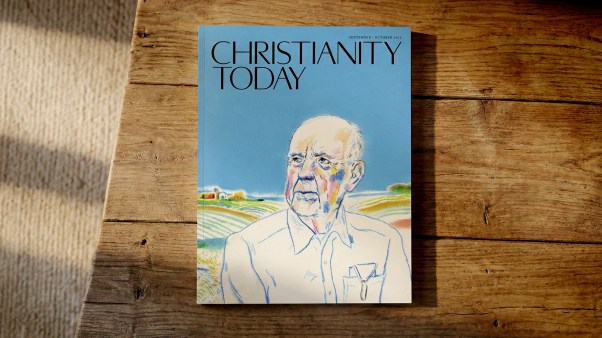YES Spiritual unity cannot exist without organic church union
Few expressions have been more widely misunderstood than “organic union.” The phrase has been taken to mean “contrived union” or “union artificially imposed from above.” Yet the dictionary definition of the word “organic” is plain: “of the bodily organs, affecting the structure of an organ, having vital organs.” Nor do we need to rest our case simply upon etymology, for the New Testament itself gives the fullest interpretation of “organic,” in a way that must surely command the obedience and stimulate the action of Christians today. Thus St. Paul, in a famous passage, describes vividly and succinctly his vision of the Church: “Rather, speaking the truth in love, we are to grow up in every way into him who is the head, into Christ, from whom the whole body, joined and knit together by every joint with which it is supplied, when each part is working properly, makes bodily growth and upbuilds itself in love” (Eph. 4:15, 16, RSV).
The analogy of the human body takes us so far: growth is something spontaneous, “from the inside”—it is not to be forced. And again, growth is a slow and steady process into something, into the stature of the full-grown man. But St. Paul’s use of his metaphor overflows its analogical use and needs to be taken with the whole of that great epistle of his. For the unity he describes is that appropriate to a spiritual fellowship: a unity in truth and love. The walls of hostility are broken down in Jesus Christ, the old nature is put away, the old incompatibles (Greek-Jew, male-female, black-white) find themselves reconciled by the Cross, and men are “renewed in the spirit of their minds.”
No antithesis, then, could be more false to the letter and the spirit of the Scriptures than the common modern antithesis between “spiritual unity” and “organic union.” There is no scriptural warrant (and this conviction has been an ecumenical spur to many) for the idea that “spiritual unity” implies indifference to external forms. And much of the present quest for “organic union,” which extends over so many continents and churches today, is precisely this: to find the external forms appropriate to the unity of spirit into which the good hand of God has been leading them more and more. This necessarily implies the humdrum (yet often difficult and painful) process of institutional reorganization: but the latter can only be regarded as worthwhile if there is a spiritual imperative underneath. The basic question is: “Is the Church itself a part of the Gospel? And if so, a Church divided, or indifferent to unity? Or a Church visibly witnessing to the power of Christ, which alone makes men ‘to be of one mind in a house’?”
The origin of the modern expression “organic unity” is hard to trace. The earliest use of it we can discover, referring to the union of churches, is in the Declaration of the South India Church (1907), where the uniting churches declare that they “have determined for the glory of God to unite organically into one body.” The phrase was used at the Edinburgh Missionary Conference of 1910, and it is found in an interesting publication of 1912: Messages of the Men and Religion Movement, Volume IV, Christian Unity: Missions (Association Press, New York). In the report of the Commission on Christian Unity, of which William Jennings Bryan was a member, it was stated that unity, at least in the mission field, should lead to “a virtual union of Protestantism and an organic union of our Protestant denominations” and would involve the adoption of “an ecumenical creed in which all the essential truths of Christianity shall be confessed” (p. 59).
One may trace the development of this concept in the ecumenical movement down to the most recent and perhaps the most celebrated expression of it, the so-called New Delhi Statement on Unity, which was issued from the Third Assembly of the World Council of Churches in 1961:
We believe that the unity which is both God’s will and his gift to his Church is being made visible as all in each place who are baptized into Jesus Christ and confess hint as Lord and Saviour are brought by the Holy Spirit into one fully committed fellowship, holding the one apostolic faith, preaching the one Gospel, breaking the one bread, joining in common prayer, and having a corporate life reaching out in witness and service to all and who at the same time are united with the whole Christian fellowship in all places and all ages in such wise that ministry and members are accepted by all, and that all can act and speak together as occasion requires for the tasks to which God calls his people.
One thing immediately strikes us in that statement (to which a remarkably wide range of churchmen, from Orthodox to Salvationists and Friends, subscribed), namely, that it spells out “organic union” very plainly in terms of “all in each place.” A question mark is set, not only against ill-feeling or competition between fellow Christians, but also against any form of institutional separation that is accepted as normal or permanent. For if we truly enjoy that spiritual unity which we claim to have as brothers in God’s household, where is its visible, nay local, manifestation?
At the same time, it is perfectly clear that the New Delhi Statement still leaves open a thousand questions. The way in which “organic union” is to be achieved is still a matter of intense discussion. It could not be otherwise, since the World Council of Churches “cannot and should not be based on any one particular conception of the Church. It does not prejudge the ecclesiological problem” (statement by the WCC Central Committee, Toronto, 1950). For if New Delhi revealed a fairly wide consensus on the marks of unity, the member churches are still far from agreement on the authentic form of that unity or the conditions which must be fulfilled in order to recover it. It would therefore be truer to say that the WCC creates a climate, or an opening, for the growth of organic union, than that it “promotes” such union, especially if the latter be understood in the sense of “administrative unification.” It should be remembered that the New Delhi report explicitly rejects union that would lead to “uniformity in organization, rite or expression,” and this rejection of the idea of “a single centralized administrative authority” was reiterated by the WCC Executive Committee at Odessa in 1964.
What, then, of the concept of “organic union” as it affects church union negotiations now in progress? At present there are more than forty separate negotiations, involving churches in six continents. Most of them cross the lines of denominational family and ecclesiastical polity. They seek to bring together episcopal, methodist, presbyterian, and congregational traditions, and in most cases (as in Nigeria, Ghana, and Ceylon) to create a united church within the framework of a single country. In nearly every scheme of union, it is intended that the united churches shall be in communion with one another and with the denominations from which they sprang—the New Delhi Statement’s reference to “a ministry and members … accepted by all” is taken with great seriousness. “Organic union” therefore implies unification (often gained by slow and painful degrees) in faith, worship, discipline, and organization—and at least an openness to wider union, under the sign of “one holy catholic and apostolic Church” in which Christians of many different traditions profess their belief.
The very number of such prospective unions poses a question: What trill be the relation between all in one place (country or nation) and all in every place? Is not the universality of the Church in danger of being swallowed up by a hundred nationalisms and provincialisms? No one can answer this question (though we may observe that this is the very contrary of the oft-discussed danger of “the one super-Church”). Professor Werner Küppers, an Old Catholic theologian, has indicated one line of approach to an answer, which combines the principle of self-government with that of conciliar consultation. He refers in particular to the way in which the various autocephalous (self-governing) Orthodox churches gather periodically in council to discuss matters of faith and practice. May this be the pattern for the “united churches” of the future? Already in the Report of the Second World Conference on Faith and Order, at Edinburgh in 1937, the need for “some permanent organ of conference and counsel” was noted (p. 253). Since that day, the need has begun to be filled in many different ways. Apart from the establishment of the World Council of Churches itself, there have been the assemblies or synods within denominational families (Frankfurt, Helsinki, Toronto, and so on) and the continuing life of such groups as joint missionary societies, national councils of churches, and associations of evangelicals. The overlapping relationships of all these groups raise many problems of ecclesiology, which have hardly yet received systematic study. How are they to be regarded as partners within the one Body of Christ, rather than as competing claimants for the time and loyalty of their members? One thing seems clear, at least: the fellowship which such groups, whether of a worldwide or interconfessional character, have engendered does not appear to have destroyed within the churches the desire for “organic union,” with full fellowship in Word and Sacrament and full recognition of ministry and members. Rather, it often seems to afford a necessary stage of preparation; for if we do not know one another, how can we love one another?
We have already suggested, as the most powerful motive for seeking “organic union,” that the churches cannot witness to the fullness of Christian truth unless they are trying to give visible and ordered expression to their unity in Christ. But the converse is also true: a genuine, as opposed to a spurious, unity. Those who fullness of truth, that the churches can hope to realize a genuine, as opposed to a spurious, unity. Those who take part in the ecumenical movement have long been accustomed to gibes about the “lowest common denominator” approach—and they ought constantly to assess what truth there may be in such criticisms. But it has been a basic principle of the Faith and Order movement since 1910 that if we have to “give up” parts of Christ’s truth in order to unite with one another, such a unity is not worth seeking. “Organic union” grows around the backbone of truth. It is if “we walk in the light, as he is in the light” that we “have fellowship one with another” (1 John 1:7). We can also say (though this should hardly be news in the year 1965!) that it is only as we engage in honest and open conversation with one another that we discover how partial has often been our own apprehension of the truth as it is in Christ. There are facets of our own traditions, previously hidden from our eyes by a kind of provincial myopia, that the exigencies of studying “organic union” bring to light. And when we delve into these traditions of ours, again and again we together strike the bedrock of the Tradition of the whole Church, which is Jesus Christ himself, “handed over” to the death of the Cross, “handed down” in the paradosis of Christian history and experience.
To sum up:
1. “Organic union,” by dictionary definition and by scriptural doctrine, refers to the healthy state of Christ’s body, in which human diversities are at once included and reconciled. To use the phrase as a synonym for “institutional amalgamation” argues a poverty-stricken theology, and also fails to take account of the living experience of united, or uniting, churches across the world.
2. “Organic union” has never been promoted by the World Council of Churches or its agencies, in the sense that a single method of unification, based upon a single doctrine of the Church, has been recommended as a panacea. As we have seen, the responsibility for action rests squarely with the churches themselves, in their various national and denominational situations. But such a declaration as the New Delhi Statement presses upon all churches (not excluding the Orthodox or the Roman Catholics) the question: “How does your church today measure up to the stature of Christ’s Body, as it is described, for example, in Ephesians 4?” (The same question evidently applies to all councils, federations, or other associations of Christians, which may by some be regarded as satisfactory alternatives to “organic union.” They do not escape the questioning of the New Testament.)
3. “Organic union” cannot afford to be indifferent either to the claims of truth or to the claims of holiness. For it is the Body of Christ that we are discussing, and in that Body alone unity, truth, and holiness cohere and give life to the members. Church history plainly indicates that indifference to either of the two latter aspects of the Body can only lead to a unity which, sooner or later, falls apart. This is why ecumenical work is at once so costly and so worthwhile.










